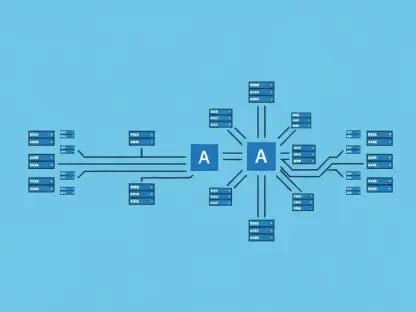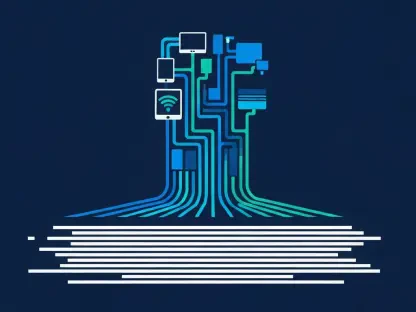In the ever-evolving world of software engineering, transitioning from monolithic architectures to microservices is a journey many enterprises embark on for greater agility and scalability. Our expert, Vijay Raina, has navigated this transformation and provides valuable insights into the challenges and triumphs of this shift. As a thought leader in software design and architecture, Raina offers a firsthand look into how breaking apart a monolith is as much about code as it is about culture and teamwork.
Why were you nervous about deploying code on Fridays when managing a monolithic system?
Deploying code on a Friday with a monolithic system was like tempting fate. The monolith was notorious for having unpredictable reactions to code changes. A single tweak required modifying multiple components, raising the risk of breaking something unnoticed until it went live. The complexities involved in such deployments, combined with the potential for production issues over the weekend when teams are less available, meant that a Friday deployment felt like rolling the dice.
What were the main reasons you decided to transition from a monolith to microservices?
The call to transition came from a need for greater deployment agility and risk management. The monolith made shipping features a cumbersome process due to tightly coupled components. Scalability was another major issue; what needed to be a simple enhancement often demanded a full upgrade in hardware capacity. Fast feature shipping was vital in our competitive landscape, and with microservices, we aimed to minimize dependencies and allow for independent scaling and development.
How did you go about mapping your business before transitioning to microservices?
We approached this by getting a clear picture of our business domains, recognizing each set of related functionalities as “bounded contexts.” We ensured we understood our business deeply by mapping out processes and ownership. Every segment was matched with a product owner responsible for understanding and managing that area, making roles and responsibilities clearer. Event storming was crucial to visually capturing data flows and interactions, often uncovering unseen complexities in our operations.
Can you describe the Strangler Fig Pattern and how it was applied during your transition?
The Strangler Fig Pattern was indispensable, allowing us to encapsulate the old with new APIs and gradually shift workloads. We incrementally created new services around the monolith, rerouting traffic and decomposing the original architecture without a complete overhaul all at once. Challenges arose, particularly with API management and the balancing act of keeping both systems running smoothly in parallel until full migration was complete.
How did polyglot persistence play a role in the migration to microservices?
Polyglot persistence was a game-changer for us, as it allowed each microservice to choose the best-fit storage solution. Transitioning from shared data tables to more specialized stores meant handling synchronization and consistency carefully. Managing various data store types required vigilance, particularly ensuring consistency across multiple databases during the transition.
What steps were taken to establish a strong CI/CD pipeline during the transition?
We developed robust CI/CD pipelines, integrating them with custom internal platforms for effective version control and deployment. These pipelines facilitated quicker iteration cycles, making use of feature flags, blue-green deployments, and canary releases. These strategies allowed us to test changes in stages, reducing the likelihood of significant production issues.
Why was observability prioritized from the start in your microservices architecture?
Observability was a foundation stone for reliability. We embedded logging, metrics, and tracing from the onset, leveraging our internal platforms to gather critical insights. Effective observability meant we could diagnose issues swiftly and maintain service health, essential in a microservices landscape where inter-service communication can introduce novel failure points.
What surprises did you encounter — good, bad, and humorous — during the transition?
The transition was full of surprises. We underestimated the increase in network calls and had to adapt to what felt like orchestrating a musical with separate players. While the influx of network traffic posed challenges, it led us to innovative solutions like batching and circuit breaking. Additionally, handling API contract changes taught us that backward compatibility is non-negotiable, yet humorous instances often arose from teams creatively working around last-minute changes.
Can you explain the importance of site reliability engineering (SRE) in your microservices journey?
Site reliability engineering changed our approach entirely. By focusing on SLIs, SLOs, and error budgets, we could proactively manage reliability. SRE taught us to view our systems not just in terms of uptime but in user-centric terms — ensuring functionality is consistently delivered at the promised quality across the board.
How did documentation and RFCs support the transition and ongoing operations?
Clear and comprehensive documentation was vital. We went heavy on RFCs and documentation early on, avoiding the pitfalls of siloed knowledge. After all, overcommunication always beats undercommunication. This approach ensured team alignment and was essential for onboarding newcomers swiftly, maintaining coherence in our evolving architecture.
What performance challenges did you face during the transition to microservices?
Performance wasn’t smooth sailing as expected. We encountered network latency issues and cold starts, which occasionally compromised performance. We learned the importance of choosing the right protocols for our needs and investing time in optimizing serialization to combat these unexpected lags.
How did testing, validation, and chaos engineering help you gain resilience?
Testing was extensive and multi-faceted. Contract tests ensured that service interfaces stayed consistent, while synthetic tests validated user journeys before full deployment. Chaos engineering further fortified our systems, exposing gaps in our resilience and helping us preemptively address potential fault lines before they turned into real-world issues.
What is your forecast for the future of microservices?
Microservices will continue redefining scalable architecture, particularly as businesses prioritize agility and resilience. I foresee increased adoption of AI-driven automation in microservices management and a greater emphasis on universal orchestration frameworks to simplify cross-service coordination, unlocking even more potential in diverse technological landscapes.









